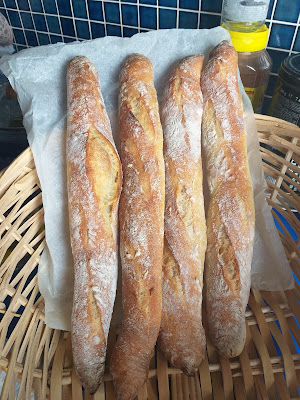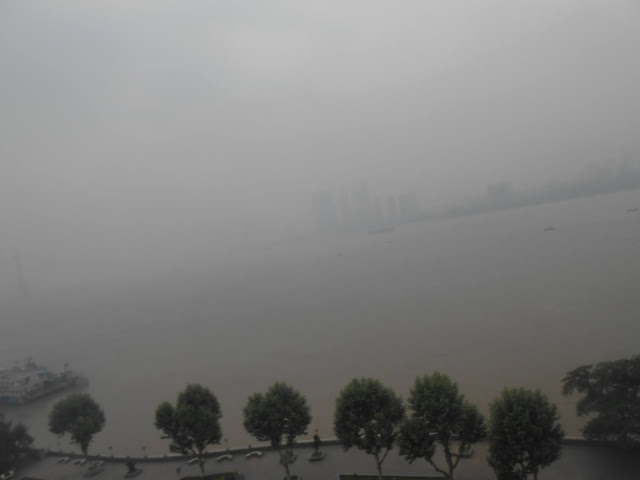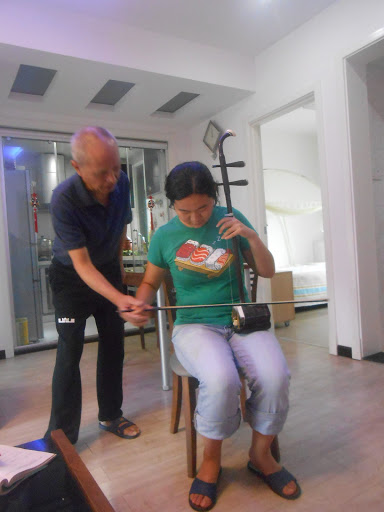This week's Travels via Food takes us to the ethnically Tibetan state of Sikkim in Northeast India.
In 2008, I had quit my job to go travelling for a year. I had been in India for about a month before I decided to get away from the chaos and head up to Darjeeling in the hills. It was a strange time to be in Darjeeling, with lots of loud Gorkhaland protests (the Gorkha ethnic group was fighting for autonomy) and hastily shuttered shop fronts. I stayed at a Tibetan guesthouse, and they pointed me towards a tiny noodle shack where I had some thukpa (Tibetan noodle soup) for the first time since I was in Tibet three years earlier.
It brought me straight back to the Tibetan countryside where there was often nothing available except thukpa - thick chewy noodles served in a salty broth of heavily oily yak and a scattering of spring onions on top for the “vegetable”. The offering in Darjeeling was far richer, India being more suited to growing vegetables than Tibet with its lower elevation and milder weather.
The guesthouse owners viewed me totally differently after I confessed my love for Tibet. They told me that I had to visit Sikkim, which was really “the other Tibet”. When the Chinese invaded Tibet major, the kingdom of Sikkim had decided to incorporate itself into India. I decided on a whim to go, it was just as well to get away from the protests anyway.
The shared jeep drive from Darjeeling across the border to Sikkim was one of the most spectacular I have ever been on. The road was awful and heavily potholed in parts. Being crammed tight into the jeep helped us to stay inside as we bounced along. At every turn there were expansive vistas of lush green tea fields with the snowy peaks of Kanchenjunga in the distance. It was unbelievably beautiful.
In the jeep I met a Slovakian man, who I would spend the next two weeks travelling with. We were such unlikely travel companions – he had just come from a 10 day whirlwind tour of Rajasthan where he and his friend hired a driver and tried to hit all the highlights in the short space of time they had. He said they had spent such long hours driving that they were exhausted by the time they reached the attractions and couldn’t really enjoy themselves. Worse, they both got sick and started to fight about whose terrible idea it was to do such a trip. In the end, they went their own ways and he decided to come to Sikkim to take photos of rare mountain flowers. Like me, he had quit his job as a nuclear scientist (he had such trouble explaining his job to me that he had to refer to himself as Homer Simpson’s boss), and left his home to live a life on the road.
On the first night in Pelling, Sikkim, we stayed at a dodgy guesthouse on the edge of town. It was dark and cramped, but the worst part was the lack of electricity after hours. It was totally dark as soon as the sun went down. Soon it became unbearably cold and we were stuck inside our rooms under covers, trying to keep warm. Being hungry and cold was even worse than being cold, so I ventured out to find something to eat. I can’t remember what I ate, but on the way back I saw a huge bonfire being lit at a different guesthouse. Without the slightest hesitation I decided to crash the party.
At the bonfire, I was stunned to meet a solo female traveller from Taiwan. She said she had been travelling on her own through India and was really sick of the daily constant harassment, and hence she had come to Sikkim for some rest and relaxation. At that moment, buoyed by the fire, I felt strongly warm towards this girl called Julia.
Julia said she had plans to walk through to Yuksom in northwest Sikkim via a beautiful holy lake. It was going to be an easy two day hike, she wasn’t sure about the route but she had met many travellers who had raved about Khecheopalri Lake. Sounds like “Catch-a-ferry”, I thought to myself. I told her I would discuss it with my new travel companion the Slovakian man, and perhaps we could all go together.
The next morning, Julia, the Slovakian man and I met over breakfast to discuss our plans. Being a nuclear scientist, he was far more prepared. We pored over the giant topographical map of Sikkim that he had somehow managed to buy in some random Indian city. The trail seemed to follow the course of the mountain, reaching the lake in a long day’s walk. From the lake, it was a short half day walk to Yuksom. In the end the Slovakian man decided that he had too much photographic equipment to carry for a long hike when we weren’t sure about the condition of the trail.
There’s a jeep to Yuksom, so we can meet you there. He suggested to Julia. We can catch up there and visit the monastery together, it’ll be fun! He enthused.
But what about the holy lake? I asked. I want to see the lake too if it is a special lake! I also wasn’t sure about my own fitness level. In the end, Julia said she was keen on doing the trail, but she would meet us at the lake for lunch on the second day. That way we could walk there from Yuksom, meet her for lunch, and walk back together.
We parted ways there and then, hugging and promising that we’ll have a huge feast when we meet up again. She set off along the trail with her small backpack. We packed our things and took the shared jeep a few hours down the road to Yuksom.
The next day we set out for our day walk to Khecheopalri Lake to meet Julia. According to the Slovakian man’s calculations, it would take us 3-4 hours to walk there, passing through several small villages. For the first 20 minutes or so, we walked along the main road where new guesthouses were under construction (one of them was called Lonely Planet!) We lamented that this beautiful region with its stunning mountain views and secluded monasteries would soon be over run by tourists.
We found the trail up the mountain and followed it easily for an hour or so. Then the trail seemed to become increasingly overgrown and we had to bush bash just to move forward. Our progress slowed dramatically, and we started to worry that we had taken a wrong turn. Just when we contemplated backtracking, there was a small clearing and a rocky path seemed to point us in the right direction. We relaxed again, laughing and chatting while we walked. It was a beautiful clear day, and we both took lots of photos of the countryside.
Our relaxed state didn’t last too long. The rocky path became increasingly difficult to navigate, with some rocks seeming more like boulders. Soon, we sometimes needed to use our hands to climb over some of the rocks. The human condition for getting used to something is limitless, and we simply got used to this new reality of “climbing” the track. The path became increasingly vertical, to the point where we had to use our hands constantly to prevent falling backwards. My fitness is average at best, and I really struggled with this impromptu rockclimb. The Slovakian man was a lot fitter than me, so he climbed ahead, shouting out reminders to follow where he placed his hands and feet.
We got to a completely vertical part, where the rock was quite loose. Every time he put his foot down it would dislodge a little shower of rock, fluttering into my face in a reminder of our precarious situation. I was scared, but didn’t know what else to do other than follow him. When I looked down into the abyss, my heart would beat so fast that it was going to come out of my mouth. So I focused on looking up, into the strangely reassuring rocky fluttersprays. He is so kindly to go first to test out the rocks! I thought to myself.
It’s hard to concentrate at these moments, though the mind is intensely concentrating on the placement of the limbs. Often the rock under one foot would get a bit loose and one had to work hard on rebalancing. I must have strayed slightly to the right, because all of a sudden when I looked up, he wasn’t quite right ahead of me anymore. He was just slightly to my left, and I felt the sudden rush of unchartered territory – had I put my hands and feet just where he had been so I knew I was safe? I had no idea.
At that moment I felt my left foot slip, and in a flash faster than lightning, my right foot slipped too and I was clinging to the rock with my hands. The cracking noise the rock made as it struggled under my weight was sickening. I must have stopped breathing as my life flashed before my eyes. I had never been a believer in “your life flashes before your eyes” until that very moment - it was the fastest Powerpoint show I have ever seen.
"Put your foot on the rock!" He shouted, and I was shocked back into reality.
The reality was that he was holding onto my left hand, which was the only connection I had to life at that moment as my legs dangled free and my right hand held a handful of crumbling rock. The feeling was absolutely serene, as if I was ready to plunge to my death at that very moment.
But I knew I didn’t want to die, not right there. Which foot did I push into the rock? I don’t even remember, but I remember looking down at the rock shower I had created. Sorry! I shouted in my head to my shadow, as if the rock shower was hurting it. With one foot secure, I quickly secured my other foot and regained my hold on life. He was panting quite hard, his feet slipping on the rock.
“You scared very bad.” He said, his English also slipping from him. (Some years later, he would tell me that he had a premonition that I was going to fall.)
There was some sort of solace to this near death experience. My legs were jelly, but somehow we found a ledge to climb onto, and that was the "top". I couldn’t believe that we were actually standing on flat ground again. When we looked at the "path" that we had come up on, we realised that we had climbed along a rocky riverbed and up a dried waterfall.
That was where I used one of my lives, climbing up a waterfall.
“I’m so happy I can kiss the ground.” I said to the Slovakian man. He got down and kissed the ground, so I did too.
After this moment of exhilaration, we had no way to tell which way to walk. The bush was thick and unmanageable in every direction, and we had lost our bearing since the sun was obliterated by cloud. We stopped to eat silently, wondering how we would be able to find our way back. Going back down the waterfall was definitely not an option. We walked on for several more hours until we came to what looked like a real track. Though we felt enormous relief, we were worried about how quickly the sun sets in the Himalayas – the darkness seems to creep up on you.
Then, in a moment that seemed like a mirage, we saw a young boy. He could not have been more than 5 or 6, and he was skipping along the track some way ahead of us. We shouted and jumped up and down to catch his attention, and he curiously made his way over to us. He didn’t speak a word of English and I wondered what he must have thought of us, perhaps strange alien like creatures. We followed him to his “village”, a scattered collection of half a dozen houses. Everyone came out of their houses to look at us, but there was only one older man who could speak English.
We asked him to show us where we were on the map, but he said his eyesight was too poor to see the small print. When we asked him where the lake was, he laughed and said we had gone the complete wrong direction from Yuksom! Dejected, we asked him how to get back to Yuksom, and he said we had to hurry since the light was fading so fast. He asked his son, a boy of perhaps 10 to guide us.
The boy could speak a few words of English, and he got our attention by singing “Hello! Hello!” We followed him as he practically ran along the track, lightfooted like a mountain goat. Darkness descended upon us and we had not thought to bring a torch. We were incredibly fortunate that the moon was bright that day, and we could just about make out the track.
After an hour or so, the track suddenly came out on to the road.
“Hello! Hello!” The boy shouted us.
“Yuksom! Hello!” The boy pointed to the left along the road.
Then he disappeared into the darkness, and we walked down the road. The adrenaline surge was over and we ached like crazy. Then we got into Yuksom and had a steaming hot bowl of thukpa, the traditional Tibetan noodle dish.
The
story ends with a mystery. We had planned to meet Julia for lunch that day,
but obviously we never made it to the lake. We asked our guesthouse if
they saw her, but no one had. The next day, we hung around in Yuksom,
wandering the streets looking for her. We went up to the monastery on
the hill, thinking she might have gone there, but she was nowhere to be found in tiny sleepy Yuksom.
The day after, we repeated our quest, asking for “Chinese girl”,
and then the Slovakian man would gesture at me “like her, but shorter”.
We asked at the only other restaurant in town but they had seen no
other Chinese girls. We waited out a fourth day, thinking that
maybe she got delayed on the way.
But
we never saw Julia again. We debated whether we should leave, and eventually reasoned that she must have changed her plans.
What happened to her? I wonder as much now as I did then. Were we supposed to contact her family or the embassy? I didn’t know her Chinese name or even her last name, how would I contact them saying a girl called Julia was lost in the Sikkimese Himalayas?
It remains a mystery to this day.
Tibetan Thukpa (Newcastle style)
Serves 2
200g Flour
1 tsp salt
Enough water to bring it to a firm dough (approx 100g)
Knead till smooth and relax for 10 minutes, then knead again. Rest for at least an hour, covered with an oiled clingwrap.
Roll the dough ball out to the long rectangle and cut into thick strips ~2cm
Pick up the strips at both ends and elongate by banging the middle of the strip repeatedly against the counter
Cook in boiling broth for approx 2 minutes or until the noodles float to the top
Serve with topping of choice (here I had mine with a veggie stir fry)
Garnish with spring onions, coriander, chilli and fried onions
I dedicate this post to all my past transient travel companions like the Slovakian man and Julia. Thank you for all your companionship and fun! Wherever you are out there, hope you are all well!











































